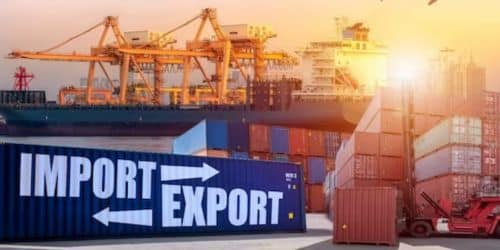Are you an entrepreneur or business owner seeking to broaden your horizons and take advantage of the numerous opportunities presented by international markets? International trade depends heavily on imports and exports since they give business access to a greater variety of goods, services, and resources, as well as new markets and clients. Understanding the dynamics of imports and exports can help you make well-informed choices on everything from finding high-quality products at reasonable prices to positioning your goods in international markets. Investigating the US’s imports and exports and learning about the important commercial ties between the US and China can give important insights into current trends in international trade. Join us as we explore the meaning of the imports and exports sector and provide you with the tools you need to take advantage of the opportunities waiting for your company abroad.
Meaning of Imports and Exports
The meaning of Imports and exports are critical components of global trade. Imports are commodities and services purchased by a country from other countries. They represent products that are not manufactured locally or that may be obtained more efficiently and affordably from overseas providers. Consumer goods, raw materials, machinery, and other items can all be imported.
Exports, on the other hand, are goods and services produced in the United States and sold in other markets. They let a country use its resources and competencies to generate items that are in high demand around the world. Exports help a country’s economy by creating jobs and generating income from foreign buyers.
Imports and exports are both important for a country’s economic well-being since they encourage specialization, provide consumer options, and create international economic cooperation. They serve as the foundation of international commercial connections, contributing to global economic development and nation interdependence.
Imports and Exports Business
Businesses engaged in imports and exports deal with the purchase and sale of products and services across international borders. Additionally, import companies buy goods from other nations to market domestically. Additionally, in order to meet domestic demand or manufacturing requirements, they may import raw materials or finished items. On the other side, export companies market domestically manufactured goods abroad. They also take advantage of competitive advantages to expand their customer base internationally. In conclusion, import and export companies are crucial for creating worldwide commercial partnerships, economic growth, and international trade.
Imports and Exports of Us
The US participates actively in imports and exports. To meet domestic demand, the United States imports a variety of commodities, including electronics, apparel, and petroleum products. The US exports a variety of products, including aircraft, machinery, and pharmaceuticals, to international markets. As one of the largest economies in the globe, the United States plays a crucial role in international trade. Its imports satiate consumer and industrial demand, while its exports contribute to economic expansion and competitiveness. The United States remains a key participant in the global trade arena, with its imports and exports shaping the global economy’s dynamics.
Read: TRADE WAR: How Did The Trade War Begin?
Imports and Exports From China
Both imports and exports are dominated by China. China imports a variety of products, such as apparatus, electronic components, and raw materials, to support its manufacturing industries. It is also a leading exporter of manufactured goods, including electronics, textiles, and consumer goods, to international markets.
China has become a central participant in the global trade landscape due to its vast manufacturing capacity and competitive prices. Its exports have made it an indispensable supplier to many countries, while its imports sustain its own industrial growth and development. China’s function as a trade superpower continues to have an impact on the global economy.
What Is an Example of Imports and Exports?
When Country A decides to buy cars from Country B, which is renowned for its effective automotive manufacturing, due to the huge demand for automobiles, this is an example of importation. To meet domestic demand and give consumers a variety of choices, Country A imports these cars. As a result of Country B’s automobile industry’s cost-effectiveness and expertise, Country A is able to provide its residents with access to a wide range of vehicles without having to engage in large domestic manufacturing.
The sale of a sizeable quantity of agricultural goods by Country B to Country A, which has a robust agricultural industry, is an illustration of an export. These goods could include different types of plants, fruits, and animals. To complement its own agricultural output and fulfill the needs of its expanding population, Country A depends on these agricultural imports. The export of agricultural goods from Country B helps that nation’s economy expand and brings in money, all the while meeting Country A’s need for vital food supplies. This reciprocal flow of commodities between Country A and Country B is an illustration of the value of global trade and how it helps to meet the various needs of other countries.
What Is the Difference Between Export and Import?
The differences between export and import are as follows:
- Definition: Export refers to selling goods or services to foreign markets, while import involves purchasing goods or services from foreign sources.
- Direction: Export is outbound trade, as it sends products abroad, while import is inbound trade, as it brings goods from foreign countries.
- Purpose: Export aims to reach international customers and expand market reach, while import fulfills domestic demand for foreign products.
- Economic Impact: Exports boost a country’s economy by generating revenue and creating jobs, while imports satisfy consumer needs and enhance product diversity.
- Trade Balance: Exports contribute to a trade surplus, while imports contribute to a trade deficit, affecting a country’s overall balance of trade.
Understanding these differences is crucial for governments, businesses, and consumers to make informed decisions and effectively participate in the global market.
What Are Imports in Economics?
In economics, imports refer to goods and services purchased from foreign countries. Moreover, they are an essential aspect of international trade, providing access to products not locally produced or cost-effectively available from overseas suppliers. Additionally, imports contribute to meeting domestic demand, supporting manufacturing industries with necessary raw materials, and enhancing product diversity in the market. Furthermore, analyzing import patterns and their impact on a country’s trade balance helps economists. This is to assess the health of the economy and its interactions with the global market. In conclusion, understanding imports in economics is crucial for evaluating a country’s trade dynamics, economic growth, and overall economic performance in the international arena.
Read Economy Recession: Definition, Causes, Effects & Solution.
What Are the Three Types of Import and Export?
The three types of import and export are:
- Merchandise Trade: Involves the buying and selling of tangible goods between countries.
- Services Trade: Focuses on the exchange of intangible services, such as financial, transportation, and tourism services.
- Investment Income Trade: This refers to income earned from foreign investments, such as dividends and interest payments.
These three types of import and export encompass various economic activities. It is a crucial component of international trade and global economic interactions.
What Is the Difference Between Import and Export in International Trade?
Import and export differ in the direction and intent of their transactions in international trade. Importing is the process of introducing products or services into a nation from abroad in order to satisfy domestic demand for imported commodities. On the other hand, exporting concentrates on selling domestically produced goods or services to overseas markets in an effort to reach a wider market and increase client base. For the analysis of a country’s trade dynamics, trade balance, and overall economic performance in the global market, it is crucial to comprehend these contrasts.
Also, read: Trade Finance: Overview, Definition, Course, Examples
What Are the 4 Types of Imports?
The four types of imports play crucial roles in a country’s economy and industrial processes:
#1. Raw Materials
Raw materials are essential inputs used in manufacturing processes to produce finished goods. They can include natural resources like minerals, metals, and agricultural products. These materials serve as the foundation for various industries, such as construction, automotive, and electronics. Importing raw materials allows countries to access resources not readily available domestically or to supplement local supply. This is when demand exceeds production capacity.
#2. Intermediate Goods
Intermediate goods are partially processed materials used in further stages of production. They represent products that have undergone some level of processing but are not yet considered finished goods. These goods are important for various manufacturing industries, enabling them to streamline production and increase efficiency. Importing intermediate goods can be more cost-effective or of higher quality compared to producing them domestically. However, leading to improved competitiveness in the global market.
#3. Capital Goods
Capital goods refer to machinery, equipment, and technology used to enhance production capabilities and improve efficiency. These goods are crucial for modernizing and expanding industries, leading to increased productivity and economic growth. Importing capital goods allows countries to access state-of-the-art technologies and equipment that may not be available or affordable locally, driving innovation and industrial development.
#4. Consumer Goods
Consumer goods are finished products purchased by individuals for personal use or consumption. They include items like electronics, clothing, furniture, and food products. Importing consumer goods can provide consumers with access to a wider variety of products and brands, improving their overall quality of life and enhancing consumer choice. For countries with high consumer demand and limited local production capacity, importing consumer goods helps meet the needs and preferences of the population.
In conclusion, the diverse types of imports fulfill distinct roles in a country’s economic landscape. By importing raw materials, intermediate goods, capital goods, and consumer goods, nations can optimize their production processes, support various industries, and satisfy the demands of consumers. International trade in these imports fosters economic interdependence and cooperation among nations, contributing to global economic development and prosperity.
FAQs
What Are the Advantages of Product Importing and Exporting?
Bringing new items to market. Many Indian and Chinese enterprises make goods for the European and American markets. Cost-cutting measures. Another significant advantage of importing is lower manufacturing costs. Developing into an industry leader. and delivering high-quality goods.
What factors influence import and export?
Factor endowments and productivity, trade policy, exchange rates, foreign currency reserves, inflation, and demand are all examples.
How can I find clients for export?
You can increase your chances of success and find buyers by networking, creating an online presence, conducting market research can also do cold calling, trading leads, partnering with a distributor or agent, and learning buyer finding for export businesses.
Related Articles
- LIST OF THE BEST FREIGHT FORWARDING SERVICES IN 2023
- Balance of Trade (BOT): Definition, Components, and Calculations
- QuickBooks: How To Use QuickBooks Application (+Free Tips)
- Proforma Invoice: What Is Proforma Invoice & Examples






